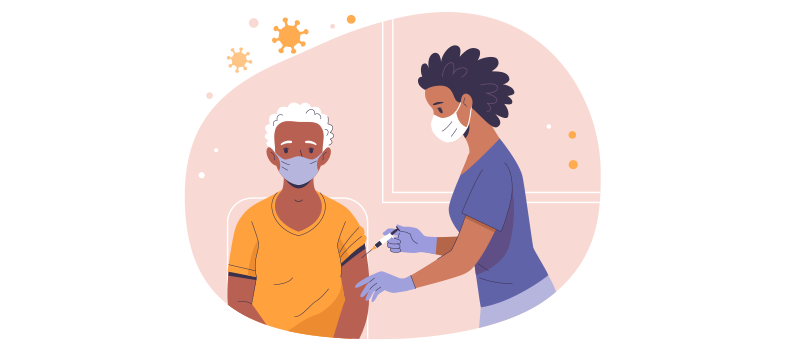Symptoms of a Pulmonary Embolism

A pulmonary embolism (PE) is a blood clot in a lung artery. It is a serious medical condition that needs emergency treatment. Please continue reading to find out how to recognize pulmonary embolism symptoms.
Why are blood clots dangerous?
Blood clots are tangles of blood cells and other substances. The body makes blood clots to stop bleeding and prevent blood loss when the skin breaks open and blood vessels are damaged. However, abnormal clotting (blood clot formation inside an intact blood vessel) can lead to serious life-threatening consequences. Abnormal blood clots can break off from the blood vessel wall and travel to other organs in the body. A blood clot can be dangerous, even fatal, if it suddenly blocks blood flow to vital organs.
For example, a clot blocking blood flow in the brain can cause a stroke. A blood clot in the heart can cause a heart attack. This happens when blood flow slows or is cut off completely to a part of the brain or heart muscle.
Blood clots in the pulmonary arteries in the lungs can cause pulmonary embolisms. A pulmonary embolism can lead to pulmonary infarction (death of the lung tissue due to lack of blood supply).
Blood clots in the deep veins of the legs are called venous clots and the condition is called deep vein thrombosis (DVT). (This is different from varicose veins, which usually affect the veins closer to the skin surface).
Medications called blood thinners can prevent blood clots from forming. Certain drugs can dissolve clots that have already formed. A surgery called thrombectomy can be done to remove blood clots from large blood vessels. The treatment depends on the location of the clot and how long you’ve had symptoms.
What are the risk factors for pulmonary embolism?
Risk factors for developing blood clots in the lungs (pulmonary embolism) and elsewhere in the body include:
- A family history of blood clots.
- Heart disease, heart failure, and blood vessel diseases.
- Certain cancers.
- Blood clotting disorders.
- Surgery, especially recent major surgery such as joint replacement surgery.
- COVID-19.
- Prolonged periods of inactivity due to injury, surgery, or long trips.
- Smoking.
- Obesity.
- Taking hormones such as birth control pills.
- Pregnancy.
What are 3 signs and symptoms associated with a pulmonary embolism?
Common symptoms of a pulmonary embolism include:
- Shortness of breath (sudden trouble catching your breath - this can be present at rest but typically gets worse with activity).
- Sharp chest pain, especially with deep breaths, coughing, and bending or leaning over.
- Syncope (fainting) due to a sudden drop in heart rate and low blood pressure.
Other symptoms of PE include:
- Coughing up blood or blood-tinged mucus.
- Dizziness or lightheadedness.
- Rapid or irregular heart rate, palpitations, racing heart.
- Fever.
- Excessive sweating.
- Cold, clammy, cyanotic skin (bluish discoloration of the skin)
- Lower leg pain, tenderness, soreness, redness, or swelling.
What are the early warning signs of a pulmonary embolism?
The early warning signs of a pulmonary embolism are usually sudden shortness of breath, chest pain, fainting, irregular heartbeat, palpitations, and dizziness.
What is the most common presenting symptom in pulmonary embolism?
The most common presenting symptom in pulmonary embolism is sudden shortness of breath (trouble catching your breath or feeling winded).
How do you check for pulmonary embolism?
You cannot check for or diagnose pulmonary embolism at home. The symptoms of PE can resemble other medical conditions that may require a different treatment. It’s important to have pulmonary embolism diagnosed and treated by a healthcare provider. Only a doctor can tell for sure if a blood clot in your pulmonary artery is causing your symptoms.
Your doctor will obtain a history and perform a physical exam. They may order blood tests such as arterial blood gases to check for low blood oxygen levels. They may also order imaging tests such as a chest X-ray, ultrasound, CT pulmonary angiography, pulmonary angiogram, MRI, or V/Q scan (ventilation perfusion scan) to assess blood flow and diagnose a pulmonary embolism.
How is a pulmonary embolism treated?
Pulmonary embolism treatment includes:
- Medications such as anticoagulants (blood thinners) to prevent an existing clot from getting bigger and new clots from forming.
- Thrombolytic therapy with clot-busting medications to dissolve blood clots quickly.
- Surgical removal of a blood clot using a thin, flexible tube called a catheter which is inserted into your blood vessels.
- Placement of a vein filter in the superior vena cava (a large vein in the body that carries blood back to the heart) to catch blood clots before they reach the lungs.
How to prevent blood clots?
Here are some ways to lower your risk of developing future blood clots.
- Take frequent breaks to stretch your legs during long car rides.
- Stay well-hydrated, get up from your seat and walk around at regular intervals, and wear support stockings to promote circulation in your legs during airplane trips.
- Get regular physical activity.
- Start moving as soon as your surgeon permits after surgery.
- Wear compression stockings as prescribed during bed rest.
- Talk to your healthcare provider about whether you need pneumatic compression devices. These devices automatically inflate and deflate to massage your veins and improve blood flow in your legs.
- Elevate your legs 4-6 inches above the level of your heart.
- If you have been given anticoagulants (blood thinners) based on your blood’s clotting status, take the medications as prescribed.
References:












SOCIAL